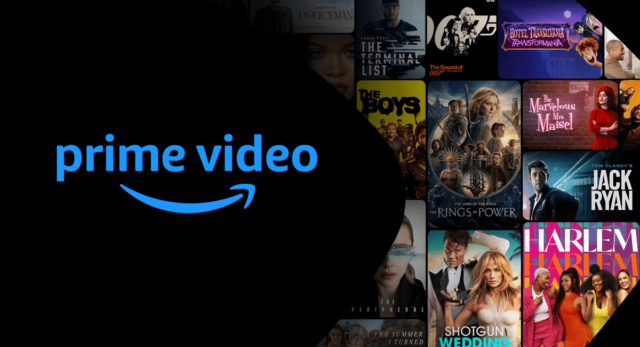Georgia Izon breaks down why Prime Video is emerging as the most strategic platform for advertisers looking to balance scale, precision, and performance.
In the ever-evolving world of Connected TV (CTV) advertising, where targeting precision and scale are more important than ever, Amazon’s Prime Video stands out as a clear front-runner. If you’re running CTV campaigns in 2025, Prime Video should be high on your media plan – and here’s why.
Prime Video: The Leader in Share of Voice
According to Samba TV’s H2 2024 U.K. State of Viewership Report, Prime Video captured 26% of ad impression share of voice among streaming platforms – edging out Disney+ (24%) and outpacing Netflix (20%). This dominant position underscores Prime Video’s role not only as a content powerhouse, but also as a strategic advertising platform with massive reach.

Tentpole Releases Create a Halo Effect
Prime Video’s strength is amplified by its high-impact original content and live event programming. Samba TV’s data reveals that advertising specific shows can drive engagement across an entire platform – a phenomenon known as the halo effect. For instance, 20.4% of households exposed to ads for The Rings of Power also tuned into other Prime Video content, illustrating how spotlighting marquee shows lifts overall viewership.

This presents a strategic opportunity: when planning your CTV buys, aligning campaigns with major releases can significantly enhance reach and audience stickiness. With tentpole events like Champion’s League football on Prime, advertisers can tap into elevated viewer interest and cross-programme engagement.
Fire TV: Unlocked Potential and Incremental Reach
While Prime Video is central to Amazon’s streaming ecosystem, Fire TV offers another layer of value. With efficient CPMs, Fire TV provides cost-effective, incremental reach beyond Prime Video. Despite 60% of Fire TV users being Prime subscribers, that leaves a substantial 40% who are not – presenting a highly attractive opportunity for brands seeking to engage audiences that are often linear-light or subscribed to ad-free SVOD platforms.
Fire TV also provides a solution to one of today’s key advertising challenges: fragmentation. As audiences spread across devices and platforms, Fire TV’s footprint helps consolidate attention across a diverse and often elusive segment of viewers.

The Broader Amazon Video Ecosystem: What’s Next
2025 promises even more integration within the Amazon ecosystem. With Fire TV Channels launching in the U.K. this year, advertisers will have new touchpoints to engage audiences across live and on-demand content. These channels will further enrich Amazon’s AVOD inventory, giving marketers additional routes to high-intent consumers.
And there’s more: shoppable ads are on the horizon for Amazon’s streaming offerings. These will allow viewers to interact directly with content and products, creating seamless brand-to-basket journeys. Especially for retail and DTC advertisers, this innovation represents the next leap in performance-driven TV.
Finally, Amazon is expected to bundle Fire TV, Prime Video, and Streaming TV placements via its DSP. Thus enabling unified, streamlined buying for holistic campaign execution.
Final Word
CTV in 2025 is all about smart scale – and Amazon delivers on both fronts. With market-leading reach, high-performing content, and device-level expansion through Fire TV, Prime Video is not just a contender; it’s a cornerstone. Brands looking to future-proof their video strategy and break through audience fragmentation should be prioritising Amazon’s ecosystem now – not later.
For a deep-dive into CTV and its potential within media planning, take a look at Lily and Georgia’s previous blog post here. 📺
Disclaimer: This blog was written by the JAA team with the support of AI-assisted research and ideation tools in editing, including ChatGPT. All content was created and approved by a human author.



